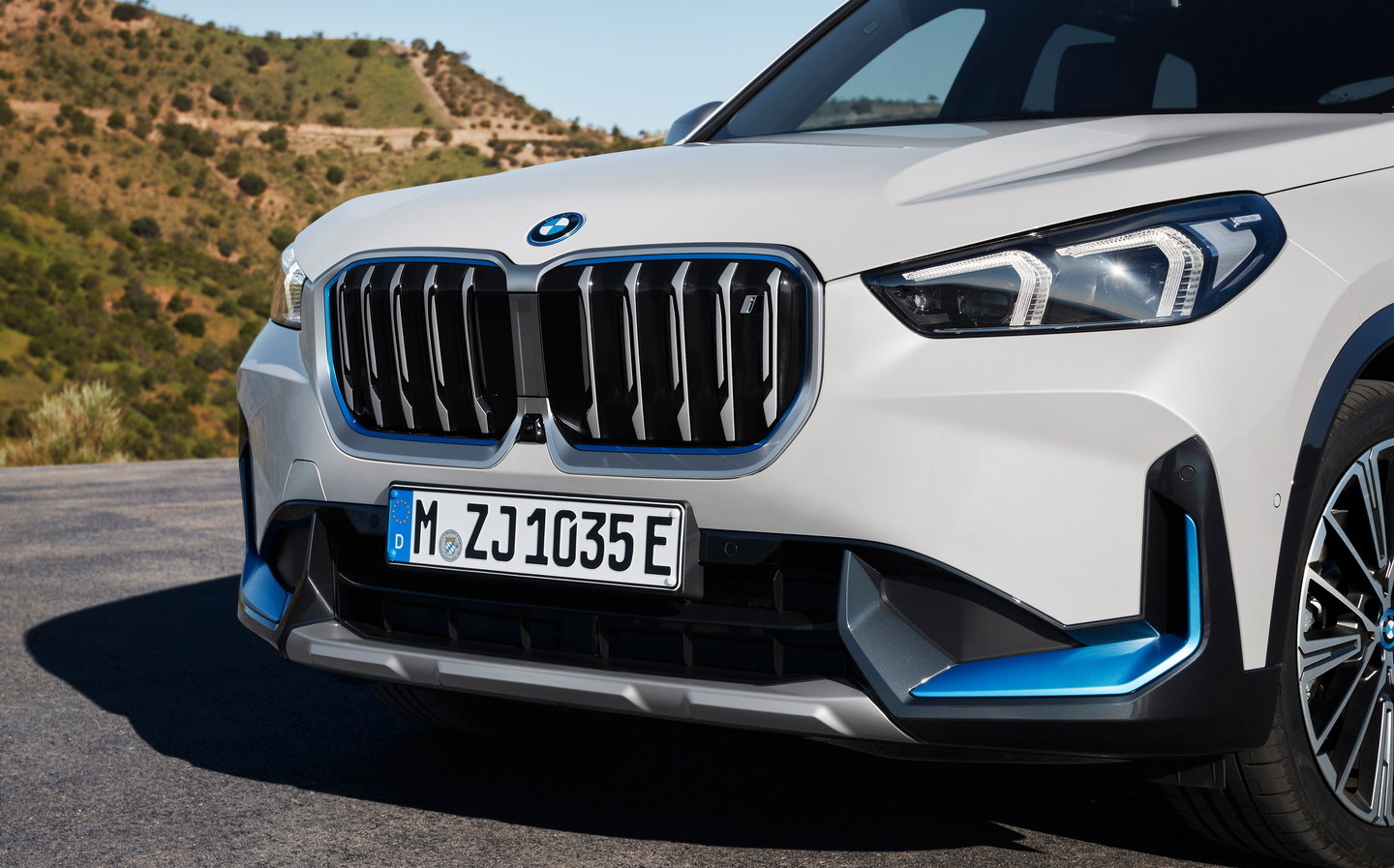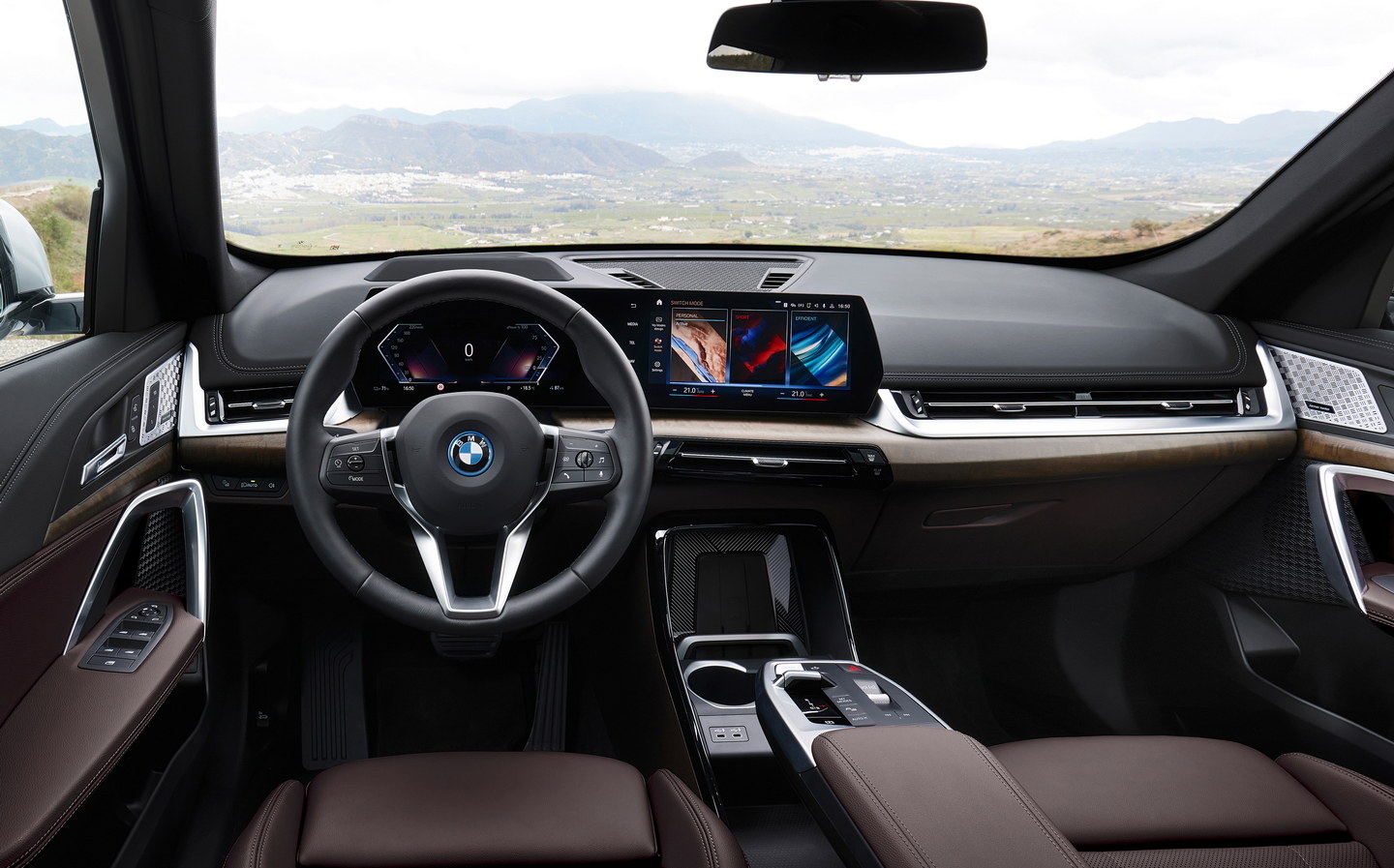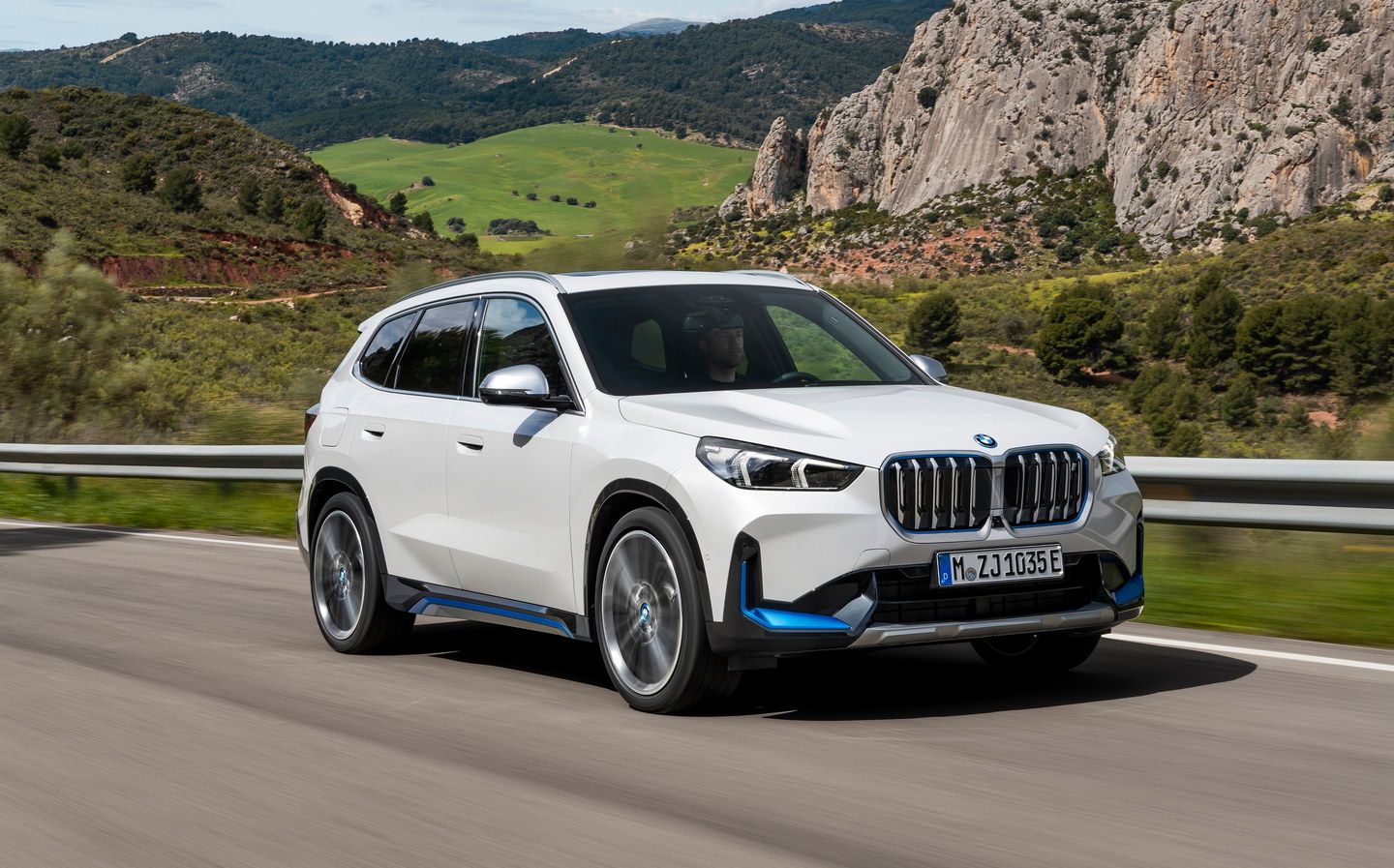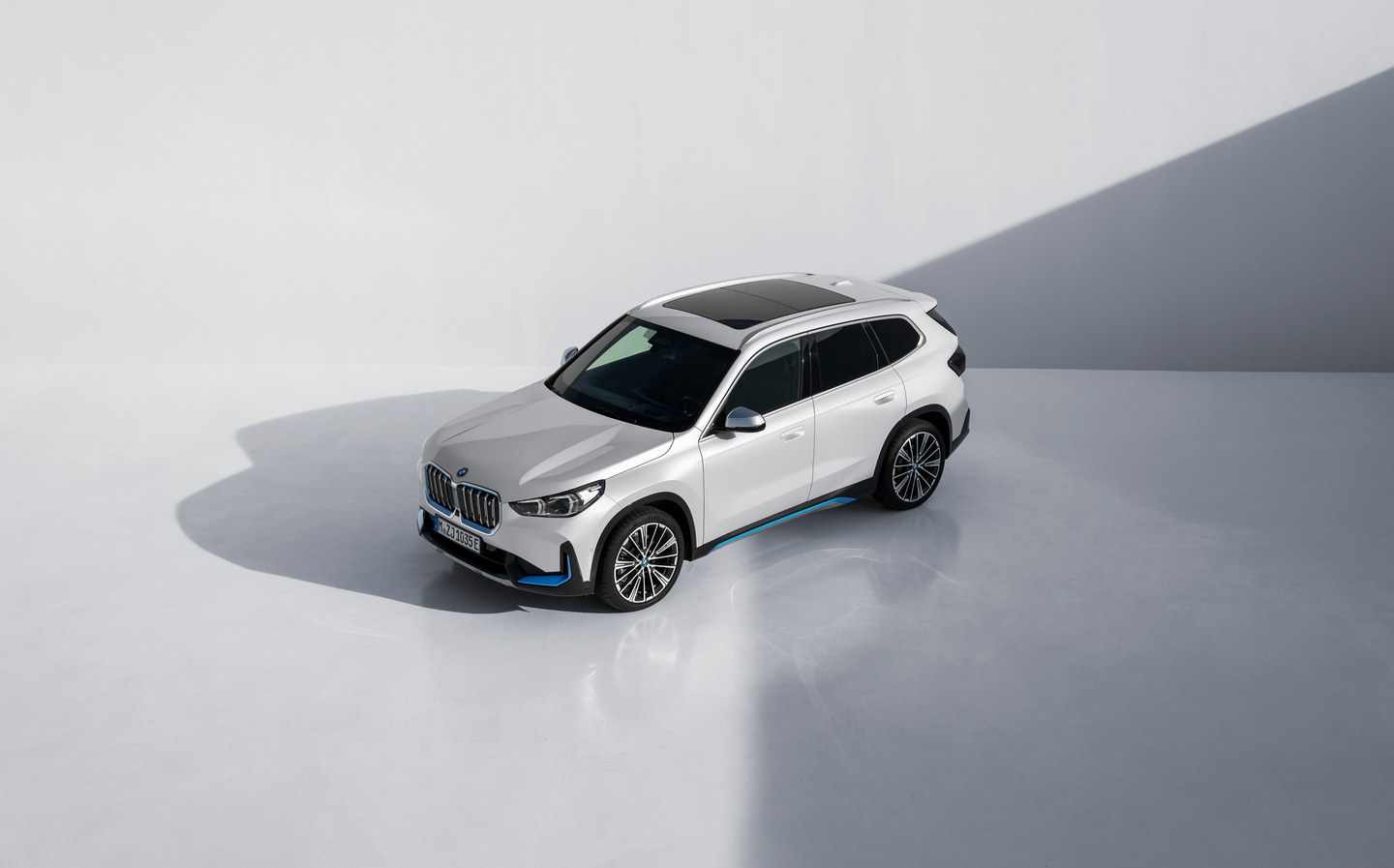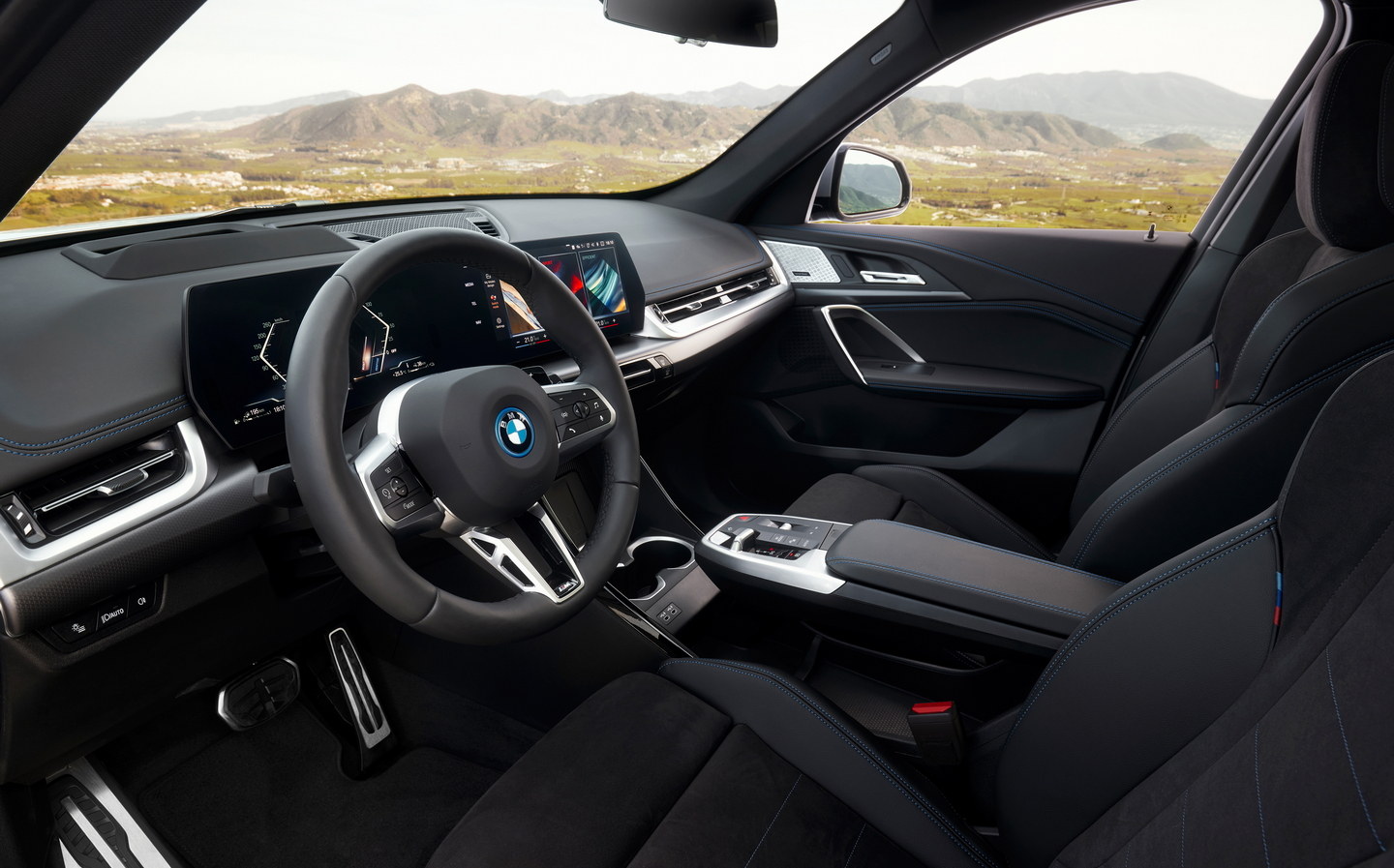New BMW X1 revealed with petrol, diesel, plug-in hybrid and pure-electric power
Every possible flavour
The third-generation BMW X1 has been revealed, with updated looks, more space inside and a broad range of efficient powertrains options, including the introduction of a new pure-electric iX1. The new BMW X1 goes on sale in October, with the iX1 and plug-in hybrid versions arriving around a month later.
The new X1 is 53mm longer than the previous generation at 4,500mm, is 24mm wider (1,845mm) and 44mm taller (1,642mm), while 22mm has been added to the wheelbase to help improve interior space.
On the outside, the X1 features BMW’s latest styling cues, including the now-obligatory oversized grille flanked by slender LED headlights.
The rest of the car is an evolution of the previous generation, with a typical SUV shape and styling add-ons that vary according to trim level.

Inside, the X1 features BMW’s latest curved touchscreen display with its OS 8 infotainment system, which reduces the number of physical controls in favour of a menu system. This is operated via screen inputs or voice control.
Elsewhere in the cabin, the floating centre console puts assorted functions close to hand for driver and passenger. Standard equipment includes two-zone climate control, sat-nav, park assist and a reversing camera.
Like the BMW 2 Series Active Tourer before it, the X1 no longer features a rotary iDrive controller.
In the back, the bench seat now slides to create more legroom or boot space as needed. There’s 540 litres of luggage room on offer in five-seat mode, while folding the chairs flat creates 1,600 litres of space. This is slightly smaller in the plug-in models.

At launch, the model range kicks off with the sDrive18i, which has a 134bhp three-cylinder turbocharged petrol engine for a 0-62mph time of 9.2secs. The sDrive18d is the entry-level diesel, which has a 2-litre unit with 148bhp. This model manages 0-62mph in 8.9secs.
These two models are front-wheel drive, while the other models in the line-up feature xDrive four-wheel drive, as well as 48-volt mild-hybrid tech. The xDrive23i has a 2.0-litre turbocharged petrol engine making 215bhp, and is capable of 0-62mph in 7.1secs, while the xDrive23d has 208bhp for a 0-62mph time of 7.4secs. All come with BMW’s seven-speed Steptronic automatic gearbox as standard.
The plug-in models start with the xDrive25e. This version packs 241bhp from its combined 1.5-litre petrol engine and 80kW electric motor, while a 14.2kWh battery offers an all-electric driving range of up to 55 miles. The more powerful xDrive30e has the same battery range, but power is up to 321bhp for a 0-62mph time of 5.7secs.
The all-electric iX1 has 308bhp during overboost and also manages 0-62mph in 5.7secs. The battery in this model is rated with 64.7kWh of usable capacity, while provisional range is claimed at up to 272 miles.
Full trim levels and UK prices will be announced closer to the X1’s launch in the autumn, but expect Sport, xLine and M Sport variants, as well as assorted styling and option packs.
Related articles
- After reading about the details of the 2023 BMW X1 and iX1 you might like to check out our review of the larger pure-electric BMW iX
- Also check out our review of the BMW iX3 mid-sized SUV
- These are all the car makers’ electric vehicle plans
Latest articles
- Watch new Porsche 911 GT3 smash Nürburgring record for manual cars

- Skoda Elroq 2025 review: Czech carmaker can’t seem to miss with its electric family cars

- Five best electric cars to buy in 2025

- Should I buy a diesel car in 2025?

- F1 2025 calendar and race reports: The new Formula One season as it happens







